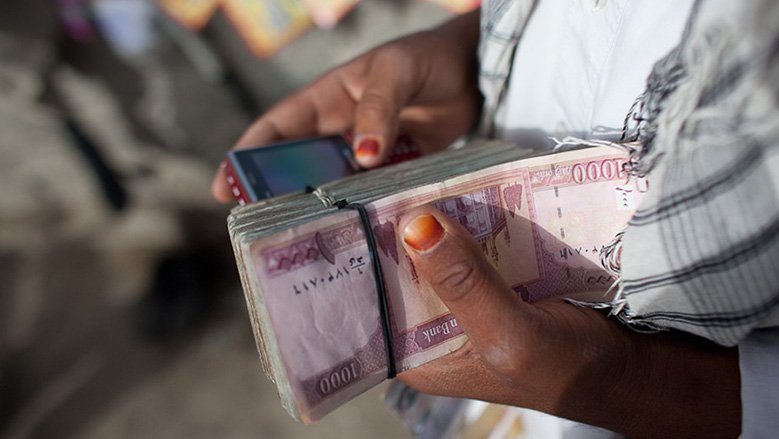Time to reprice African debt
Countries face high costs in managing their foreign liabilities. Initiatives to mitigate the situation, such as the new continental rating agency, have recently emerged.
External debt servicing will cost African countries US$89 billion in 2025, according to estimates by the G20. South Africa, which holds the presidency of the Group this year, established a committee of experts in early March to recommend measures to reduce the cost of external borrowing for African countries, especially as at least 20 of them are imminently vulnerable to debt distress. These obligations are mostly to bilateral and private creditors, with the latter often imposing not only commercial but also exorbitant terms.
The total external debt stock for sub-Saharan African (SSA) countries stood at US$864 billion at the end of 2023, according to World Bank data, with private and bilateral creditors accounting for 41% and 19% of the indebtedness, respectively, and external debt servicing amounting to 16% of exports. Since private credit, especially eurobonds, comes with no conditionalities, it remains more attractive to African sovereigns, regardless, even though a substantial 40% of SSA external debt is owed to multilateral financial institutions.
Other measures aimed at addressing the exorbitant lending practices that African countries are subjected to abroad are afoot. In February 2025, the African Union (AU) created a credit rating agency, which is part of an ongoing effort, especially by the South Africa-led G20, to reduce the cost of external borrowing for African countries. Substantial evidence suggests that African countries face additional costs that are not based on technical or fundamental realities when borrowing abroad. A 2025 study by the United Nations Conference on Trade and Development (UNCTAD) “finds that subjective indicators, judgements, and sentiment play an important role in determining the rating opinions of rating agencies, and that this creates significant scope for bias”.
As Figure 1 comparing 5-year US$ credit default swap spreads of select African countries and the United States and Italy shows, market participants are almost perennially on edge about the credit outlook of African sovereigns.

These biases are incorporated into credit rating decisions by the leading three global rating agencies, hence the need for alternative and more balanced views, which the AU-founded Africa Credit Rating Agency (AfCRA) is expected to provide. The AfCRA will further institutionalise earlier and still ongoing efforts by the African Peer Review Mechanism (APRM) and the United Nations Economic Commission for Africa (UNECA), which have been facilitating more objective pushback against biased credit ratings and overpriced borrowings. It will also enable the more than a dozen to twenty African countries without a credit rating to get one.
Limit moral hazard to reduce Africa risk premium
Even so, the so-called “Africa risk premium” is not entirely baseless. More than a few African countries have historically misused borrowed funds for elephant capital projects and conspicuous consumption, palpably with the expectation of little accountability and eventual debt relief. External creditors have also grown cynical over the decades about the veracity of information disclosures by African authorities, as they tend to present a burnished picture of the actual state of their finances. Only lately, Senegal revealed its financial health was much worse than it had earlier supposed. And the misrepresentation by Mozambique of its true indebtedness is still of relatively recent vintage.
The stigmatization that follows default also underpins why African countries tend to shy away from restructuring their debt, often opting for refinancings instead. Most just keep paying expensive debt servicing costs till they are inevitably strained or default abruptly, thus undergo an even costlier restructuring process and in more than a few cases a humiliating debt relief arrangement. While the global financial architecture could be better structured to ensure equitable participation by African countries, the observed bias underpinning higher borrowing costs for African sovereigns has not been entirely punitive, as more than a few cases of concessionary considerations abound. Predictably, renewed calls for another round of debt relief for African sovereigns have emerged.
For a more sustainable solution, a balance has to be struck between reducing the moral hazard that enables African leaders to borrow money exorbitantly in the expectation that they will not have to pay back in full, as they will be able to successfully seek debt relief, and the information asymmetries that motivate the biases in ratings and overpricings by global credit rating agencies and market participants. A recalibration of sorts is required to limit, if not totally solve, the rather entrenched moral hazard problem. That is, price the debt right, use the debt right. Thus, as the current effort to ensure African debt is priced correctly gets underway, there should also be an equal emphasis on the integrity of debt data provided by African authorities, as well as accountability for how the proceeds of debt are spent.
Institute global multilateral credit rating agency for benchmarking
Despite a complicated start, and with dynamic improvements, the G20 Common Framework for Debt Treatments beyond the Debt Service Suspension Initiative (DSSI), or Common Framework, could evolve into a robust global platform for African borrowers to sustainably repay their debt. With China and other emerging powers becoming significant external creditors to developing countries, especially African ones, the Common Framework was set up in 2020 during the Saudi Arabia G20 presidency. The goal was to provide a unified platform with the Paris Club to facilitate debt restructurings for countries that had received debt servicing relief via the DSSI during the COVID-19 pandemic. Chad, Zambia and Ghana have successfully restructured their external debt under the Common Framework, with that of Ethiopia still in progress but imminent.
The negative net return on African external assets, especially hard currency reserves, as they do not yield as much as their overpriced external liabilities, private credit in particular, and the huge consideration placed on them by global rating agencies are also problematic. The perception of risk of African sovereigns when substantially girded by sufficient international foreign exchange reserves does not appear to filter through to rating decisions; if it did, African sovereigns should not have to borrow so expensively.
A global multilateral bridge between African sovereigns, global credit rating agencies, and market participants – to address these historical biases, information asymmetries, and lack of trust – is a necessity. Thus, there should be exigent efforts to create an International Monetary Fund (IMF)/World Bank-backed multilateral credit rating agency as well. Emerging global uncertainties, which have begun to discourage even multilateral institutions from supposedly riskier African lending, make it imperative to quickly establish new global institutional frameworks, and strengthen existing ones that have been effective like the Common Framework, as the short to medium-term risks of default by African countries continue to rise. Deliberately, limited support by the second Donald Trump administration in the United States for the South African G20 presidency, as well as American plans for reconfiguring the IMF and World Bank will be potentially significant constraints, however.












Leave a Reply